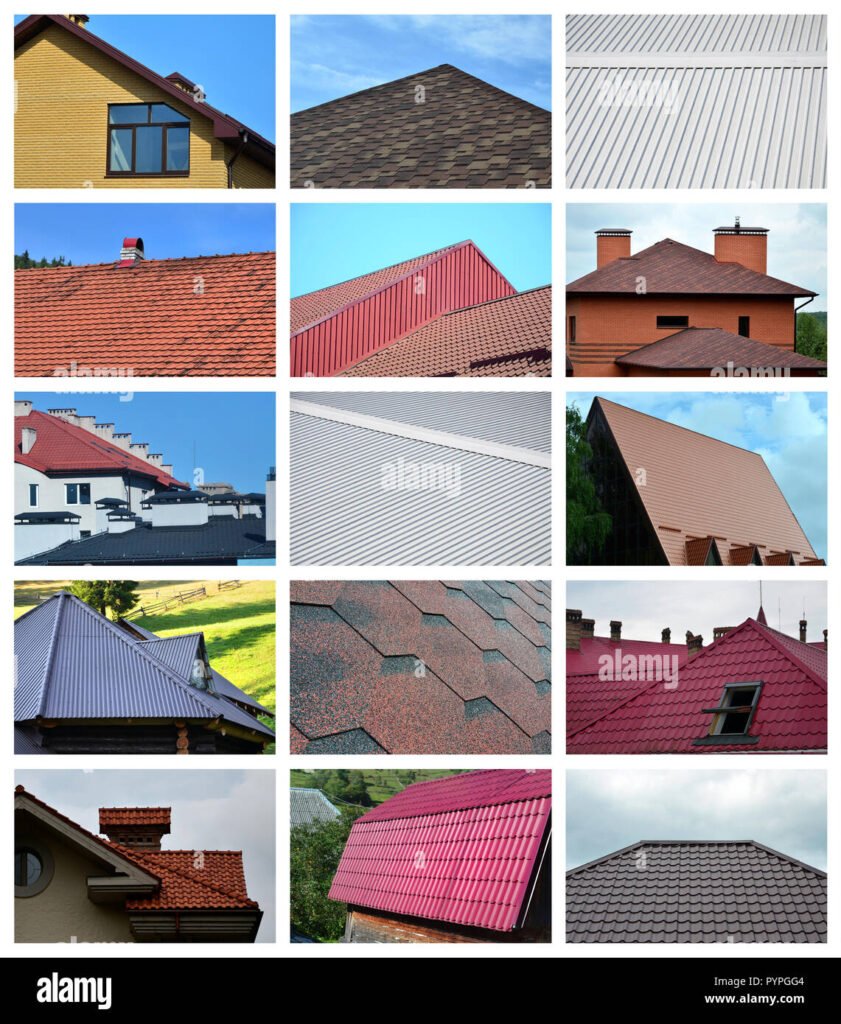Alternatives to Asphalt Shingles: Top 7 Roofing Options

When it comes to roofing materials, asphalt shingles have long been the go-to choice for many homeowners due to their affordability and availability. However, with advancements in roofing technology and a growing interest in sustainability and unique aesthetics, many are now exploring alternatives to asphalt shingles. These alternatives not only offer distinct advantages in terms of durability, energy efficiency, and appearance but also cater to a wide range of architectural styles and personal preferences. In this article, we will delve into the top 7 roofing options that serve as excellent alternatives to asphalt shingles, each with its own set of benefits and considerations.
Exploring Steel Roofing
Steel roofing stands out as one of the most durable and long-lasting alternatives to asphalt shingles. Known for its exceptional strength, steel can withstand extreme weather conditions, including heavy snow, hail, and high winds, making it an ideal choice for regions prone to severe weather. Additionally, steel roofing is fire-resistant and can contribute to a home's energy efficiency by reflecting sunlight and reducing cooling costs in the summer. While the initial cost of steel roofing may be higher than that of asphalt shingles, its longevity and minimal maintenance requirements can make it a cost-effective option in the long run. Steel roofing also offers versatility in design, with options ranging from traditional corrugated panels to more sophisticated standing seam profiles, allowing homeowners to achieve a variety of architectural looks.
The Beauty of Wood Shingles
Wood shingles offer a natural and timeless aesthetic that is hard to replicate with other materials. As an alternative to asphalt shingles, wood shingles provide a unique charm and character to homes, particularly those designed in traditional, cottage, or rustic styles. Made from cedar, redwood, or pine, wood shingles are not only visually appealing but also environmentally friendly, as they are made from renewable resources and are biodegradable at the end of their life cycle. However, homeowners considering wood shingles should be aware of their maintenance requirements. Wood is susceptible to rot, mold, and insect damage if not properly treated and maintained. Additionally, wood shingles may require more frequent replacement than some other roofing materials, but for many, the aesthetic appeal and natural beauty of wood are well worth the effort.
Advantages of Aluminum Roofing
Aluminum roofing is another excellent alternative to asphalt shingles, particularly for homeowners living in coastal areas. Aluminum's natural resistance to salt corrosion makes it an ideal choice for homes near the ocean, where salt spray can significantly shorten the lifespan of other roofing materials. Lightweight yet durable, aluminum roofing can also be an advantageous option for structures that cannot support the weight of heavier materials. Like steel, aluminum reflects sunlight, contributing to energy efficiency by keeping homes cooler in the summer. Aluminum roofing is available in a variety of styles, including shingles, tiles, and standing seam panels, allowing for flexibility in design. While the initial investment in aluminum roofing may be higher, its durability, low maintenance, and resistance to corrosion can offer long-term savings and peace of mind.
Synthetic Asphalt: A Modern Alternative
For those who appreciate the look of traditional asphalt shingles but desire enhanced performance and longevity, synthetic asphalt shingles present a compelling alternative. Made from a combination of rubber, plastic, and other recycled materials, synthetic asphalt shingles mimic the appearance of natural materials like slate and wood while offering superior resistance to weathering, impact, and UV damage. These shingles are lightweight, making them suitable for a wide range of roofing structures, and are available in a variety of colors and styles. The environmental benefits of synthetic asphalt shingles, including their contribution to reducing waste in landfills and their recyclability, make them an attractive option for eco-conscious homeowners. Despite their higher upfront cost compared to traditional asphalt shingles, their durability and minimal maintenance requirements can result in cost savings over time.
Elegance of Slate Roofing
Slate roofing is often considered the pinnacle of roofing materials, offering unmatched durability and a timeless elegance that can significantly enhance the curb appeal of any home. As an alternative to asphalt shingles, slate offers a natural beauty that is unparalleled, with each slate tile having its own unique color and texture. Slate roofs are known for their longevity, with many lasting over a century with proper maintenance. This makes slate an excellent investment for homeowners looking for a long-term roofing solution. Additionally, slate's natural density makes it highly resistant to fire and weather damage, including heavy rain, snow, and wind. However, slate roofing is one of the most expensive options and requires a skilled installer. Its weight also means that not all structures are suited for a slate roof, necessitating a structural assessment before installation.
Benefits of Rubber Roofing
Rubber roofing, particularly ethylene propylene diene monomer (EPDM) roofing, is a versatile and eco-friendly alternative to asphalt shingles. Primarily used on flat or low-slope roofs, rubber roofing is known for its durability, waterproof qualities, and resistance to extreme temperatures. Rubber roofs are relatively easy to install and repair, making them a cost-effective option for many homeowners. Additionally, the dark color of most rubber roofing materials can help melt snow and ice, reducing the winter maintenance needs of homes in colder climates. Rubber roofing is also an environmentally responsible choice, as EPDM is often made from recycled materials and is fully recyclable at the end of its life. While rubber roofing may not offer the aesthetic variety of some other materials, its practical benefits make it a strong contender for homeowners prioritizing longevity and environmental sustainability.
Plastic Composite Roofing: An Innovative Choice
Plastic composite roofing is one of the newest alternatives to asphalt shingles on the market, offering a blend of recycled plastics, fibers, and rubber to create a durable, lightweight, and environmentally friendly roofing material. These composite shingles are designed to mimic the appearance of natural materials like wood and slate, providing homeowners with the aesthetic appeal of traditional materials without the associated maintenance and durability concerns. Plastic composite roofing is highly resistant to weathering, impact, and fire, making it a safe and long-lasting option for a wide range of climates. Additionally, the use of recycled materials in the manufacturing process makes plastic composite roofing an eco-conscious choice for homeowners looking to reduce their environmental impact. While the initial cost of plastic composite roofing may be higher than some traditional materials, its longevity, low maintenance requirements, and environmental benefits can provide significant value over time.
While asphalt shingles remain a popular choice for many homeowners, the growing availability of alternatives to asphalt shingles offers a wealth of options for those looking to enhance the durability, energy efficiency, and aesthetic appeal of their homes. From the natural beauty of wood and slate to the modern innovations of synthetic and composite materials, there is a roofing option to suit every preference and architectural style. By considering the unique benefits and considerations of each material, homeowners can make an informed decision that aligns with their priorities and contributes to the long-term value and sustainability of their homes.





Leave a Reply